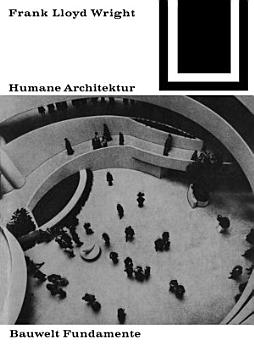Humane Architektur
thg 11 2014 · Bauwelt Fundamente Sách 25 · Birkhäuser
Sách điện tử
276
Trang
reportĐiểm xếp hạng và bài đánh giá chưa được xác minh Tìm hiểu thêm
Giới thiệu tác giả
Wright is widely considered the greatest American architect and certainly one of the most influential. Throughout a career of nearly 70 years, he produced masterpiece after masterpiece, each different and boldly new and yet each with the unmistakable touch of Wright's genius in the treatment of material, the detailing, and the overall concept. Born in Wisconsin of Welsh ancestry, Wright studied civil engineering at the University of Wisconsin and began his career in Chicago as chief assistant to Louis Henry Sullivan, who influenced his early thinking on the American architect as harbinger of democracy and on the organic nature of the true architecture. Out of these ideas, Wright developed the so-called prairie house, of which the Robie House in Chicago and the Avery Coonley House in Riverdale, Illinois, are outstanding examples. In the "prairie-style," Wright used terraces and porches to allow the inside to flow easily outside. Movement within such houses is also open and free-floating from room to room and from layer to layer. Public buildings followed: the Larkin Administration Building in Buffalo (destroyed) and the Unity Temple in Oak Park, Illinois, the former probably the most original and seminal office building up to that time (1905). The Midway Gardens in Chicago and the Imperial Hotel in Tokyo (both gone) came next, winning Wright still greater acclaim. Personal tragedy, misunderstanding, and neglect dogged Wright's middle years, but he prevailed, and in his later life gathered enormous success and fame. The masterworks of his mature years are the Johnson Wax Building in Racine, Wisconsin, and Fallingwater, Bear Run, Pennsylvania---with its bold cantilevered balconies over a running stream, probably the most admired and pictured private house in American architecture; then, toward the end of his life, the spiral design of the Guggenheim Museum in New York City. Wright's own houses, to which he joined architectural studios, are also noteworthy: Taliesin West was a true Shangri-la in the Arizona desert, to which he turned in order to escape the severe winters in Wisconsin, where he had built his extraordinary Taliesin East. Wright was a prolific and highly outspoken writer, ever polemical, ever ready to propagate his ideas and himself. All of his books reflect a passionate dedication to his beliefs---in organic architecture, democracy, and creativity.
Xếp hạng sách điện tử này
Cho chúng tôi biết suy nghĩ của bạn.
Đọc thông tin
Điện thoại thông minh và máy tính bảng
Cài đặt ứng dụng Google Play Sách cho Android và iPad/iPhone. Ứng dụng sẽ tự động đồng bộ hóa với tài khoản của bạn và cho phép bạn đọc trực tuyến hoặc ngoại tuyến dù cho bạn ở đâu.
Máy tính xách tay và máy tính
Bạn có thể nghe các sách nói đã mua trên Google Play thông qua trình duyệt web trên máy tính.
Thiết bị đọc sách điện tử và các thiết bị khác
Để đọc trên thiết bị e-ink như máy đọc sách điện tử Kobo, bạn sẽ cần tải tệp xuống và chuyển tệp đó sang thiết bị của mình. Hãy làm theo hướng dẫn chi tiết trong Trung tâm trợ giúp để chuyển tệp sang máy đọc sách điện tử được hỗ trợ.







